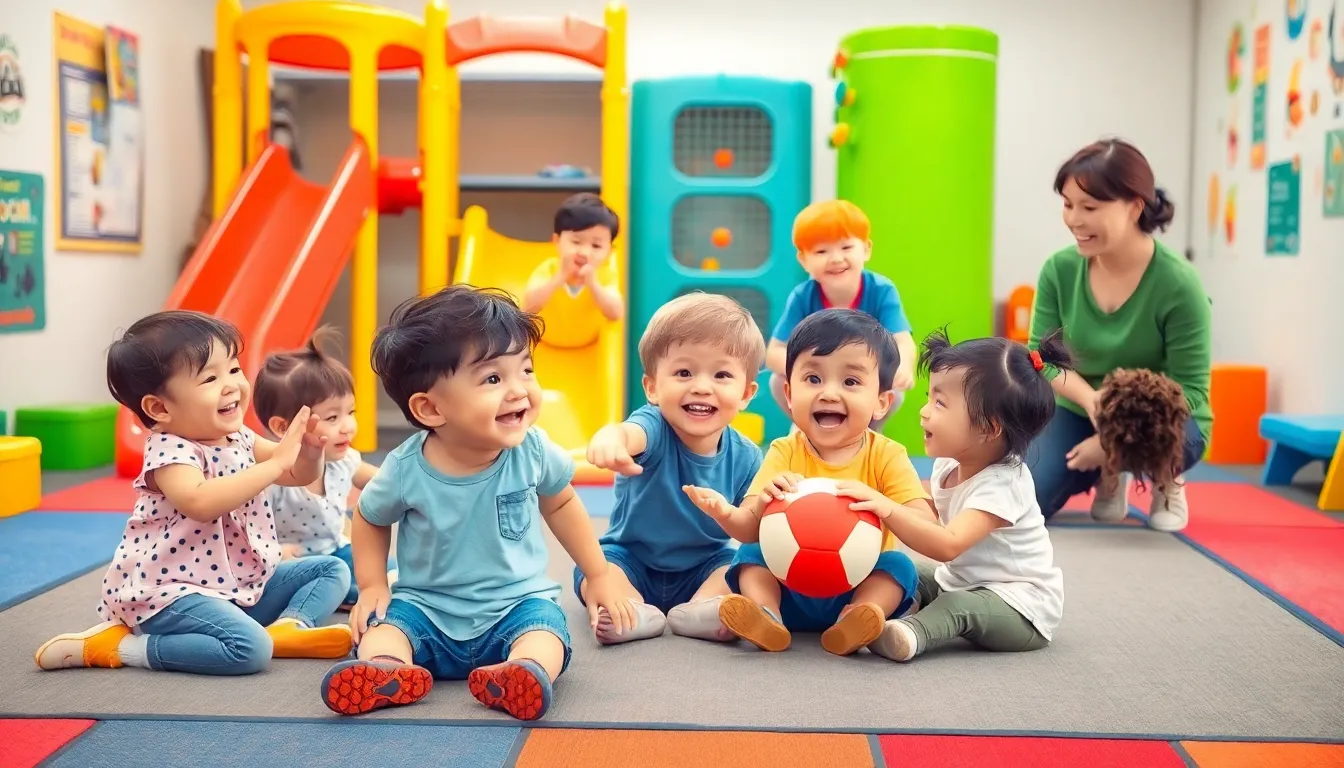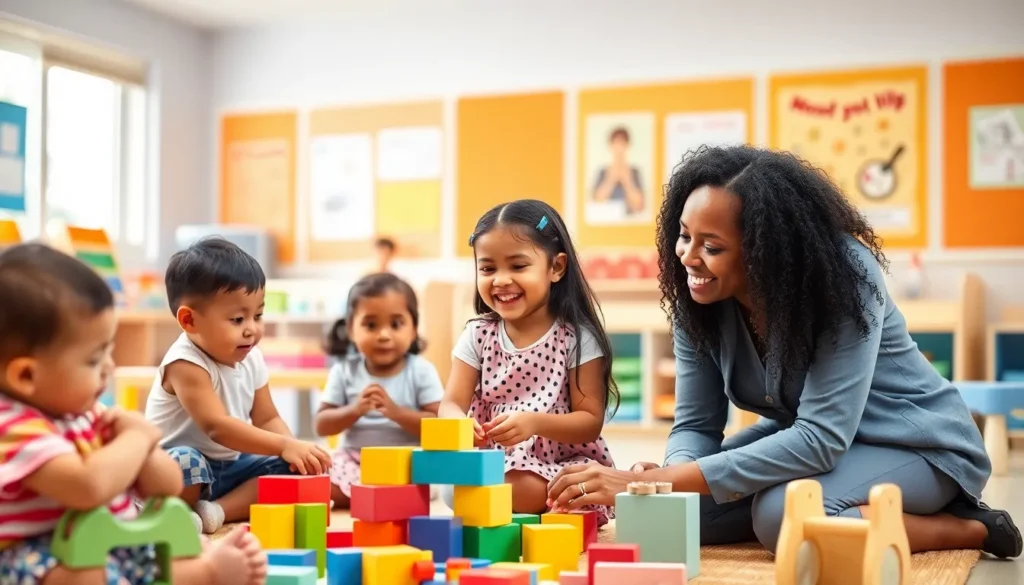Table of Contents
ToggleEvery parent knows that sending a child to preschool can feel like launching them into a tiny, chaotic universe. With little explorers running wild, ensuring their safety is a top priority. But don’t worry—preschools have more safety measures in place than a superhero squad on a mission!
From childproofing classrooms to implementing strict drop-off protocols, these institutions are dedicated to creating a secure environment where kids can learn and play without a care in the world. After all, the only tumbles they should be taking are the playful ones during a game of tag, not because of unsafe conditions.
Importance Of Preschool Safety Measures
Preschool safety measures play a crucial role in creating an environment conducive to learning. A secure atmosphere minimizes risks and allows children to focus on playful activities essential for development. Childproofing classrooms protects children from potential hazards like sharp objects or small choking items. Implementing strict drop-off protocols ensures that only authorized individuals can pick up children, reducing the risk of abduction.
Regular staff training on emergency procedures enhances preparedness for unexpected situations. Emergency drills not only familiarize children with the process but also empower them to respond appropriately. Monitoring systems, including cameras and secure entry points, provide vital oversight of the premises, deterring unauthorized access.
Signage throughout the facility reinforces safety messages for both children and caregivers. Clear instructions regarding fire safety and evacuation procedures keep everyone informed and ready to act swiftly. Additionally, maintaining appropriate adult-to-child ratios enhances supervision, thereby allowing staff to attend to individual needs effectively.
Health measures, such as proper sanitation, alleviate concerns about illness spreading among children. Routine cleaning of toys and surfaces minimizes germ transmission, creating a healthier environment. Implementing a sick policy ensures that ill children stay home, further protecting the overall wellbeing of the preschool community.
Finally, open communication with parents fosters a partnership focused on safety. Regular updates and meetings allow parents to express concerns, while providing staff insights into potential safety improvements. Prioritizing preschool safety measures not only secures children’s physical wellbeing but also promotes their emotional and cognitive development in a supportive environment.
Common Safety Risks In Preschools

Preschools face various safety risks that can affect children’s well-being. Understanding these risks helps in implementing effective safety measures.
Physical Risks
Physical risks in preschools often arise from unsafe environments. Slip hazards, such as wet floors or cluttered areas, can lead to falls. Sharp objects, like scissors or broken toys, pose additional dangers. Childproofing classrooms minimizes these hazards. Supervising high-risk activities ensures children’s safety during play. Regular maintenance of equipment, like playground structures, reduces the likelihood of injury. Emergency exits need to be accessible, allowing for quick evacuations. By assessing areas frequently, staff can identify and address potential risks.
Emotional Risks
Emotional risks in preschools impact children’s mental health and development. Bullying among peers can create a hostile environment. Lack of adult supervision exacerbates these issues, leaving children vulnerable. Regular communication between staff and caregivers fosters a sense of security. Building positive relationships with teachers enhances emotional support. Teaching conflict resolution skills empowers children to navigate social challenges. Moreover, having clear behavior policies sets expectations and promotes a respectful atmosphere. Addressing emotional safety maintains a nurturing environment that supports overall development.
Effective Preschool Safety Measures
Safety measures in preschool settings play a vital role in ensuring children’s well-being. Implementing these measures relies on key strategies that address various risks.
Staff Training and Certification
Staff training and certification remain crucial for maintaining safety. Regular training sessions equip staff with the skills needed to handle emergencies and routine procedures effectively. First aid and CPR certification provide immediate response capabilities in case of health issues. Additionally, training in child development helps staff recognize signs of stress or discomfort in children. Ongoing workshops about safety protocols keep everyone updated on best practices and procedures, ensuring staff members remain vigilant and responsive. The overall goal focuses on creating a safe environment where children feel secure and cared for.
Emergency Preparedness Plans
Emergency preparedness plans form an essential part of preschool safety strategies. Each plan should detail specific procedures for various situations, including natural disasters, medical emergencies, and lockdown scenarios. Regular drills familiarize children and staff with the procedures, reducing fear and confusion during real emergencies. Clear communication channels, including designated assembly areas, ensure everyone knows where to go and what to do. Documentation for each child includes critical information accessible to staff during emergencies. Effective emergency plans not only protect children but also instill confidence in parents, reinforcing the commitment to safety within the preschool.
Role Of Parents In Safety
Parents play a crucial role in ensuring preschool safety. They actively participate in discussions about safety protocols with staff members. Maintaining open lines of communication with teachers and administrators strengthens trust. Parents encourage their children to recognize emergency procedures and participate in safety drills.
Engaging with staff regarding childproofing measures promotes a secure environment. Parents should inquire about the types of monitoring systems in use and their effectiveness. Regularly reinforcing safety practices at home helps children internalize important lessons.
Participating in school events fosters community and allows parents to observe safety measures firsthand. Attending parent-teacher meetings provides opportunities to raise concerns or suggestions. Parents can also volunteer for safety committees to collaborate on initiatives aimed at enhancing safety.
Being aware of children’s emotional well-being contributes significantly to safety. Encouraging children to express their feelings helps detect any signs of distress. Parents should educate their children about reporting any uncomfortable situations to trusted adults.
Creating a partnership centered on safety improves preschool experience for everyone. Actively supporting health measures like routine sanitation reinforces health practices. Prioritizing these aspects cultivates a more robust community focused on the well-being of children.
Parents stand as essential allies in promoting preschool safety. Through active involvement and open communication, they create a secure environment where children can thrive. Understanding their responsibilities and responsibilities aids in upholding a safe preschool community.
Prioritizing safety in preschools is essential for creating a nurturing environment where children can thrive. By implementing effective safety measures and fostering strong communication between parents and staff, preschools can significantly reduce risks.
Regular training and preparedness ensure that staff are equipped to handle emergencies while childproofing and supervision create a secure space for exploration and learning.
When parents actively engage in safety discussions and reinforce practices at home, they contribute to a culture of safety that benefits everyone. Together, they can build a supportive community that focuses on the well-being of each child, allowing them to develop both physically and emotionally in a safe setting.







